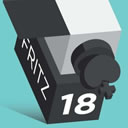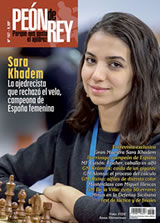The Modernized Modern Defense
From the first move, he tells his opponent (and the judges who decide the brilliance awards!) that he would like to play in an unbalanced position. Then the excitement of the fight runs through your veins and you just have to trust yourself to handle the developments better than the other player". ~ Daniel Fernandez
Unloading free sample in the PDF.
Playing Modern Defense regularly is a sign that you really love chess. From the first move, he indicates to his opponent (and the brilliance awards jury!) that he would like to play an unbalanced position. Then the excitement of the fight runs through your veins and you just have to trust yourself to handle the developments better than the other player. For a long time, this was really the absolute frontier, the wild west of open theory: if it went well, you looked like a genius, if it went bad, you were matched in 20 moves, and most likely neither of you actually did the analysis that you so badly needed to remember at the meeting.
It took a certain air of reckless abandon, of sheer devil's mischief, to play it successfully, and to some extent it still does. Some of this passion was transmitted in print by Swedish GM Tiger Hillarp Persson when he wrote his Tiger's Modern. Even within the modern, the crème de-la-crème of the opening, when I learned it from your book almost a decade ago was the famous Hippo configuration, the epitome of the adventurous spirit.
While White is aggressively placing her pieces, controlling the center, etc., Black carelessly places almost all of her pawns in the third row and shuffles her pieces behind them. For some reason, this appealed to me, a 15-year-old: the idea that I could take the game to my opponent the way I wanted, instead of endlessly preparing for some subtlety on Poison Pawn Najdorf's move 27.
Throughout 2010 I played Moderna almost exclusively; it filled the space between my phase 1... e5 and my phase 1... c6. (The latter remained my main answer to 1.e4 until I started learning the Najdorf in 2018, but I still enjoy mixing it regularly with the Modern; there are over 20 references to my own games in the text.). Surprisingly, 2010 was the year that my chess career began to progress by leaps and bounds! I became an instant messenger by relying heavily on him; an example of one of my usual tournaments can be seen in Part I (Lahiri-Fernandez). I embraced complexity, boldness and novelty with all my heart, and he hugged me back.
Times are changing (as even the Wild West at some point became industrialized) and theory has developed all over. So it has become possible, among other things, to try to write a rigorous opening manual on the modern. What I mean is not that equality has been found and this should be your exclusive opening choice for all time to come (I would lie to you if I said that) but that there is now a roadmap on how you should study this. the opening. It was about time, given the number of 1.e4 repertoires that have been written and that contain anti-modern recommendations (usually in the "Others" or "Miscellaneous" section at the end!) that nobody took the time to fight rigorously.
In addition, there has been a radical change in the spirit of modern gamers (and also Pirc players): we no longer wish to get something totally new, or redefine the Hippo-style development concept, but generally these days we want to get a Sicilian Structure! That is, a position in which Black can play ... cxd4 (or make White play dxc5) and thus get a central majority that will be very useful to you in the long run. That has now become the intellectual gold standard, a trend that has progressed alongside the inclusion of this openness in the repertoires of more players and its slow shift towards the mainstream from the margins of what is acceptable.
As artisans (because we must never forget our roots) in this moving strip, it's important to be guided. Nowadays (and as much as you want to play it with your hands up) if you want to include the Modern in your repertoire you should study a little. I should know, for example, where whites can get a safe plus (in my opinion, only Chapter III.2), where they can get a less safe plus (Chapter IV.4) and where there are routes to equality. dynamic or otherwise (essentially the rest of the book!)
Data sheet
- Product Type
- Paper
- Language
- English
- Theme
- Openings
- Author
- Daniel Fernandez
- No Pages
- 376
- Year published
- 2020
- Measurements
- 23.5 x 17cm
- ISBN
- 9789492510884
















